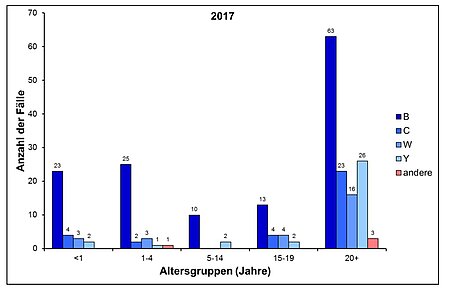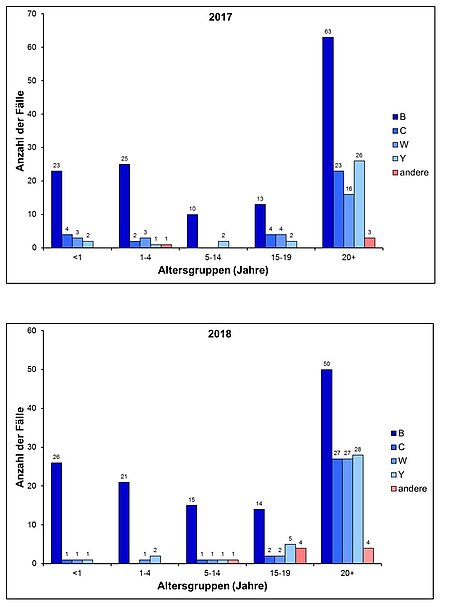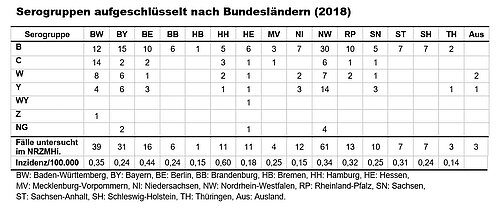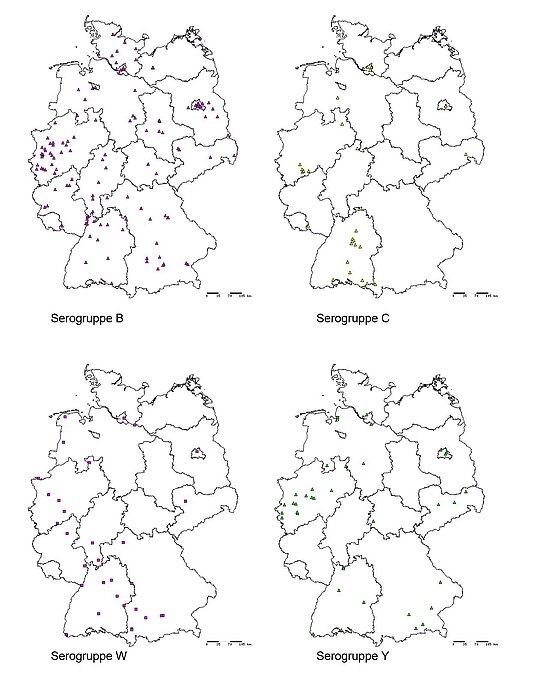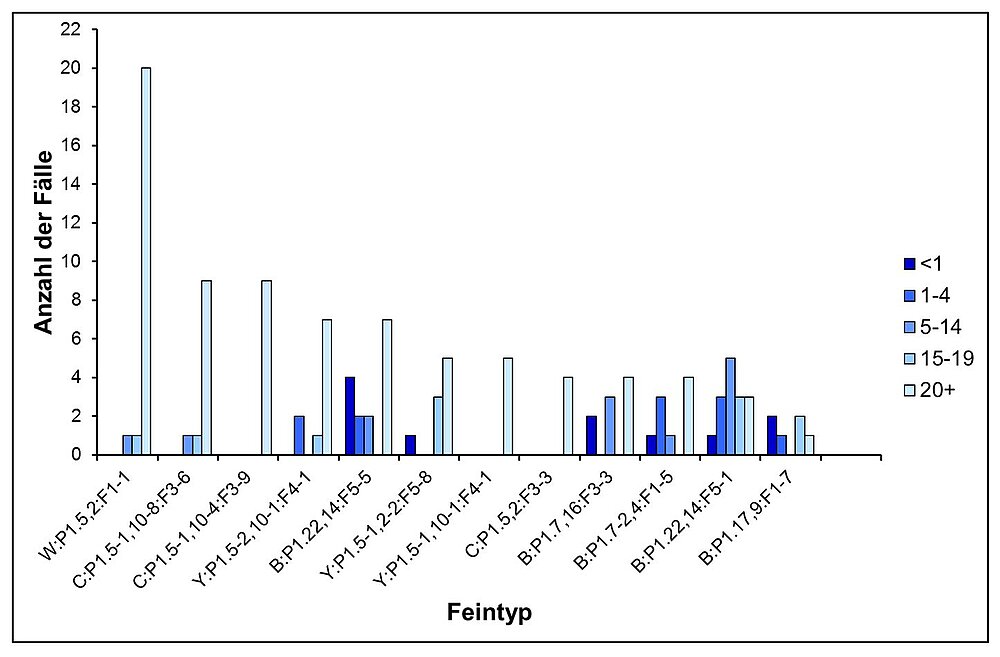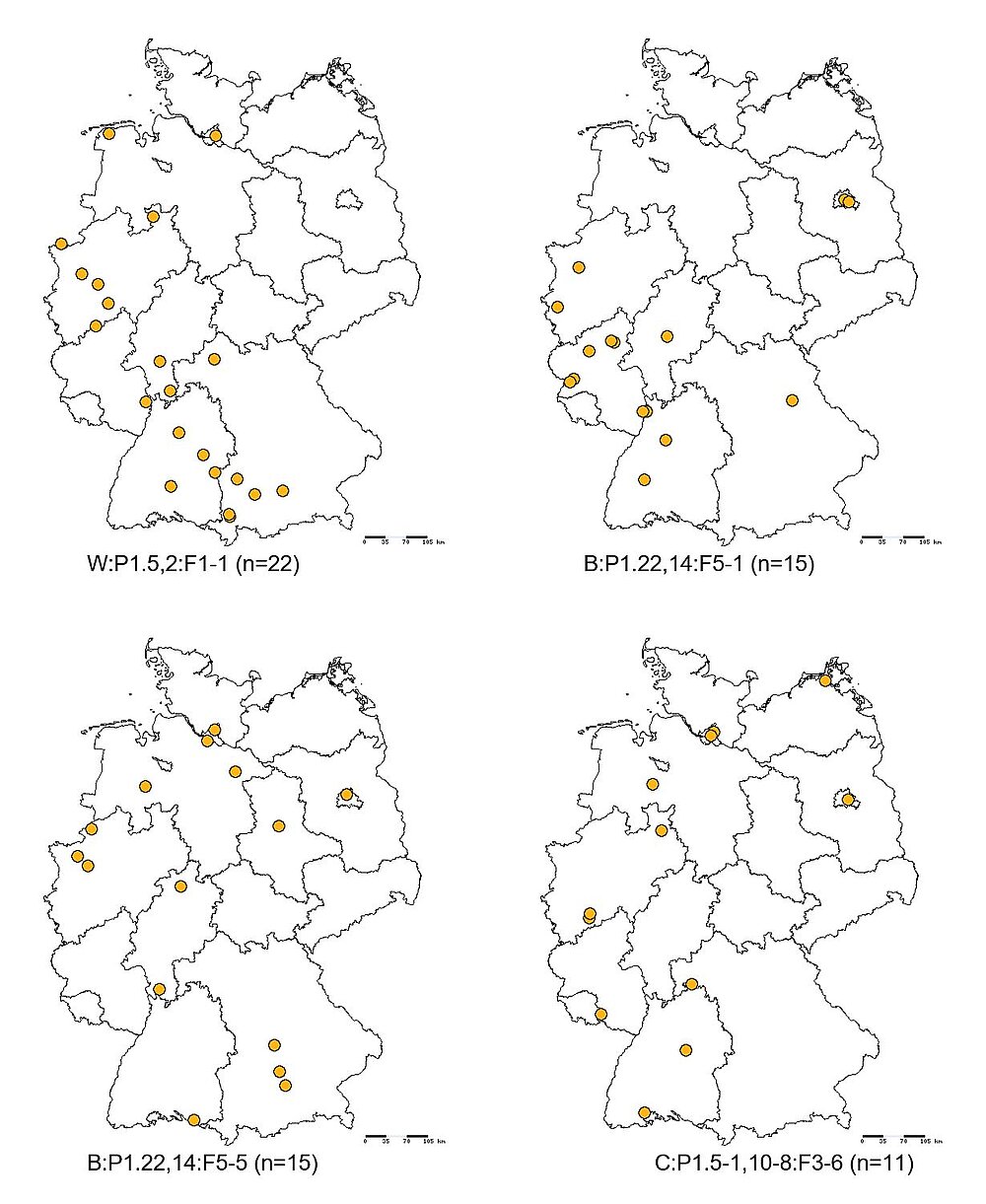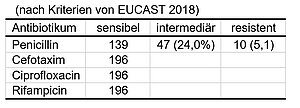Daten 2018 (eng)
Data on the laboratory-based surveillance of meningococci (2018)
Introduction
The German National Reference Centre for Meningococci and Haemophilus influenzae (NRZMHi) is assigned by the Robert Koch Institute (RKI) with the performance of laboratory based surveillance of invasive meningococcal disease (IMD). In 2018, 361 samples from 320 individuals were analyzed. The NRZMHi confirmed Neisseria meningitidis in 264 patients, in 235 of them from primarily sterile compartments (latter figure corresponds to the number of cases with invasive disease). In 32 patients (13.6% out of 235) detection of meningococci was carried out using molecular techniques only. During the same period 295 cases of IMD were notified to the RKI (data as of 16.01.2019, SurvStat@RKI). Given that all processed cases of IMD were notified retrospectively, one can assume an 80% coverage of IMD by NRZMHi (82% in 2017).
There were only minor changes of the incidence of IMD in Germany: 0.34/100,000 in 2017 vs. 0.36/100,000 in 2018 (data as of 16.01.2019, SurvStat@RKI).
Frequency of serogroups B, C, W and Y (2011-2018)
Serogroups according to age groups (2017-2018)
Serogroups according to federal states (2018)
Geographic distribution of serogroups (2018)
Most common finetypes (2018)
Most common finetypes according to age groups (2018)
Geographic distribution of the four most common finetypes (2018)
Antibiotic susceptibility of invasive isolates
Disclaimer
The above data were generated with federal funds (RKI). Scientific use is prohibited without prior written consent by NRZMHi or RKI. Commercial use is strictly prohibited. Inclusion of figures or tables in talks or oral presentations is not allowed.
© NRZMHi 2019

